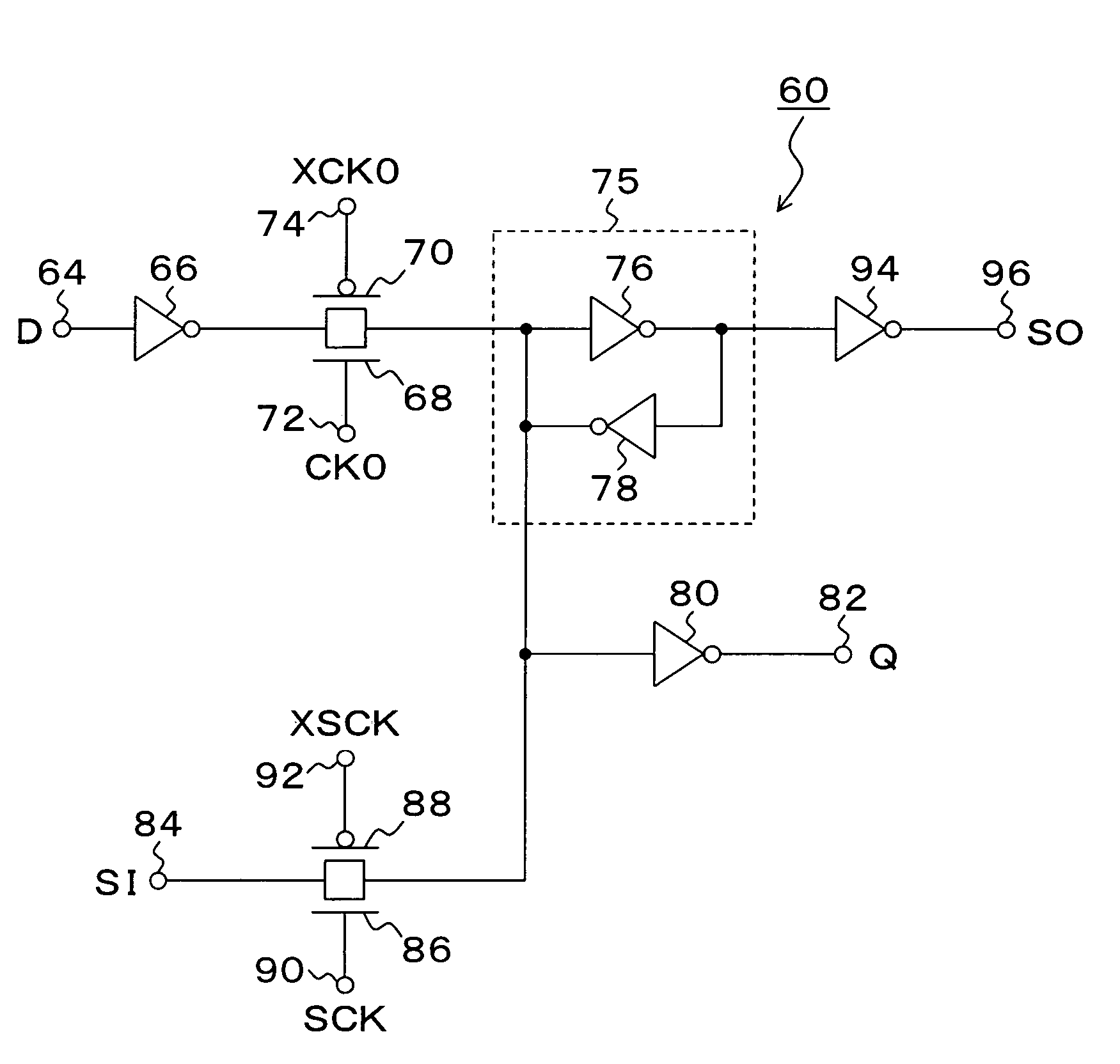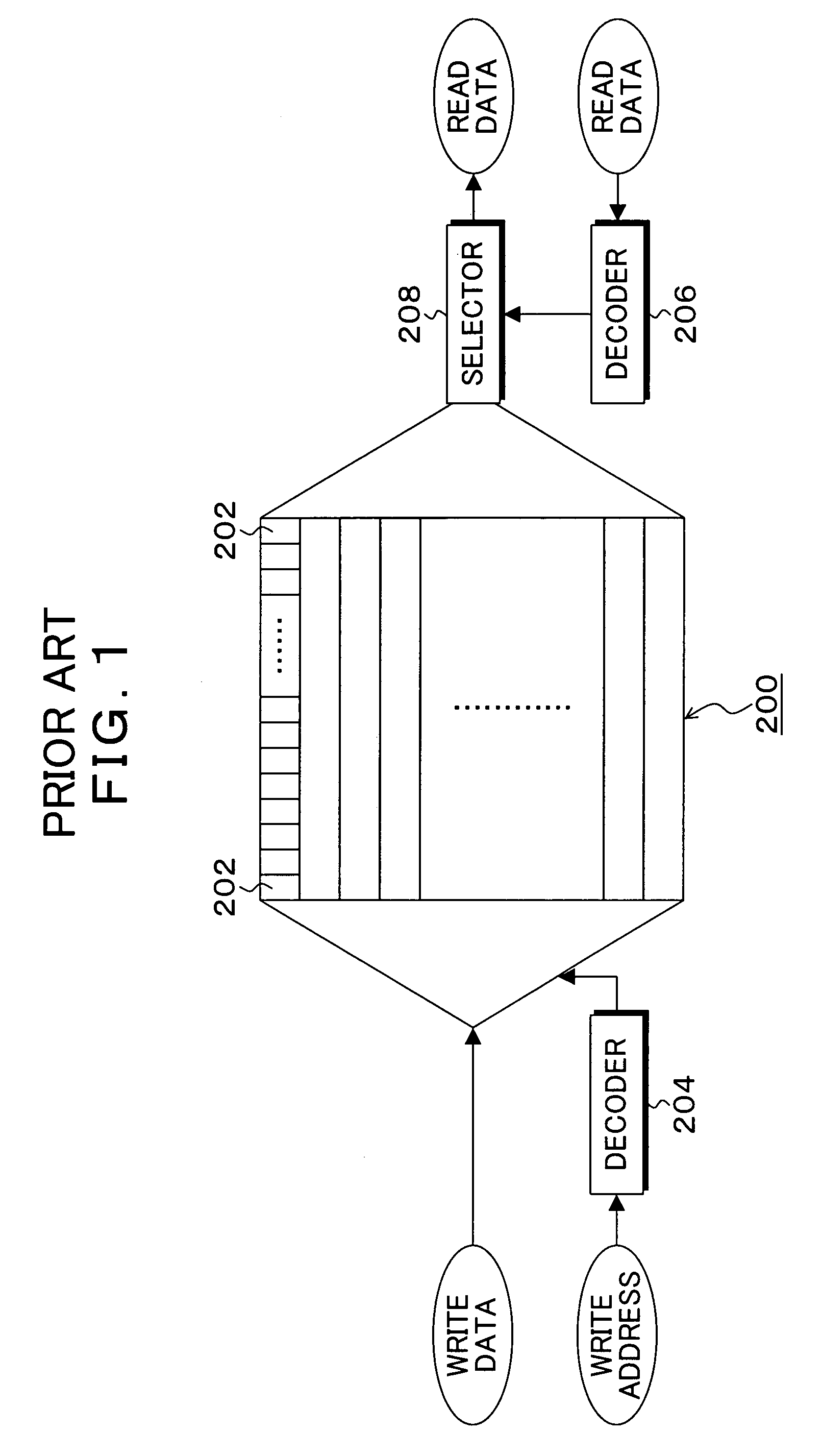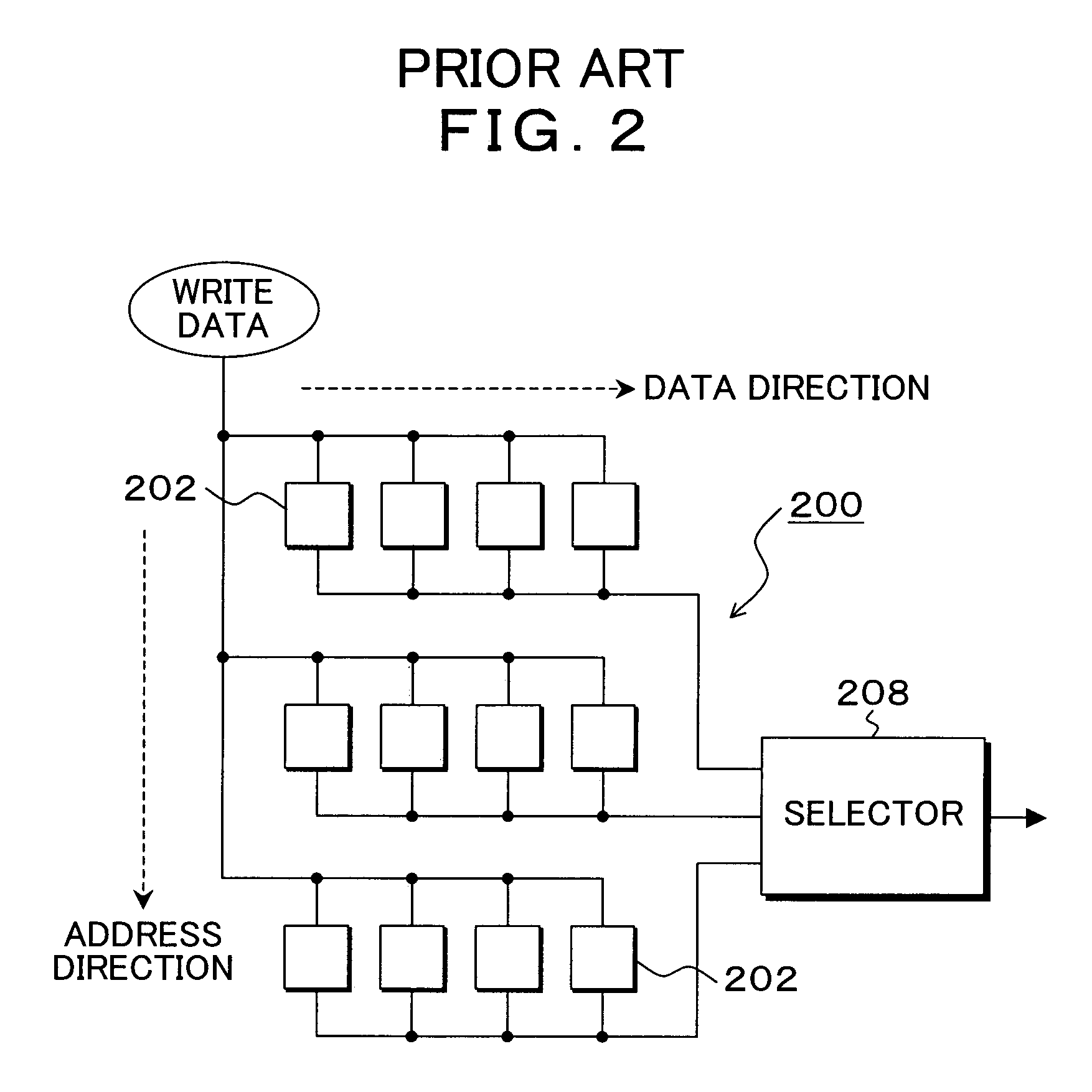Register file and its storage device
a register file and storage device technology, applied in the field of register files, can solve the problems of reducing the efficiency of demonstration tests, reducing the performance, and the inability to form scan circuits therein, and achieve the effect of reducing the scan operation tim
- Summary
- Abstract
- Description
- Claims
- Application Information
AI Technical Summary
Benefits of technology
Problems solved by technology
Method used
Image
Examples
Embodiment Construction
[0050]FIGS. 8A and 8B are circuit block diagrams of an embodiment of a register file according to the present invention. In FIGS. 8A and 8B, the register file according to the present invention has a memory array 10, and the memory array 10 is provided with registers 12-0, 12-1, 12-2, . . . , 12-m with the vertical direction as the address direction and the horizontal direction as the data direction. The registers 12-0 to 12-m arrange n+1 storage devices (first storage devices) in the data direction as the horizontal direction. A write address decoder circuit 24 and AND gates 26-0 to 26-m are provided as file writing units at the left of the memory array 10. A write address of the register is input into the write address decoder circuit 24 via a scan control circuit 16 according to the present invention described below from an address terminal 34, and this write address is decoded to generate a decode output for any one of the registers 12-0 to 12-m. Each decode output from the writ...
PUM
 Login to View More
Login to View More Abstract
Description
Claims
Application Information
 Login to View More
Login to View More - R&D
- Intellectual Property
- Life Sciences
- Materials
- Tech Scout
- Unparalleled Data Quality
- Higher Quality Content
- 60% Fewer Hallucinations
Browse by: Latest US Patents, China's latest patents, Technical Efficacy Thesaurus, Application Domain, Technology Topic, Popular Technical Reports.
© 2025 PatSnap. All rights reserved.Legal|Privacy policy|Modern Slavery Act Transparency Statement|Sitemap|About US| Contact US: help@patsnap.com



